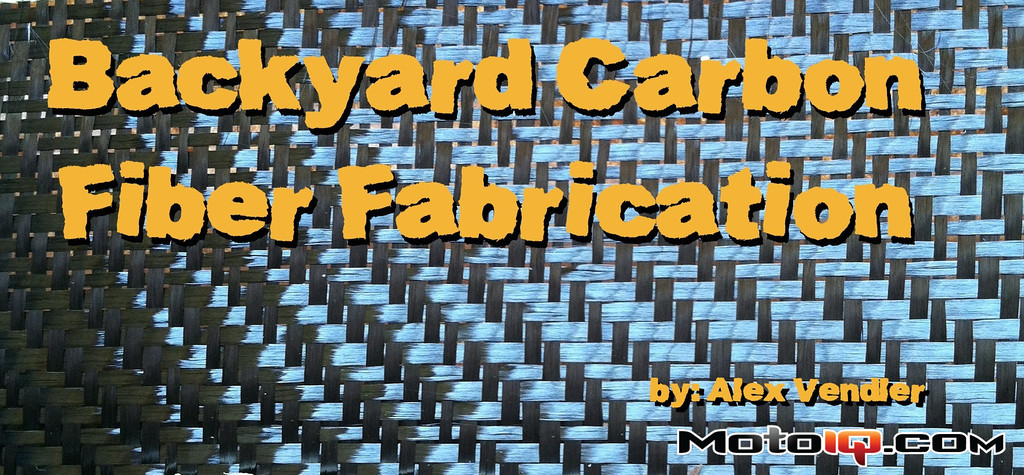,
OK, so now that we have covered at least the most basic of the basics on cloth and resin, let's think about what kind of a core material we want to use for our sandwich structure. Again there are a lot of options including but not limited to, kevlar honeycomb, aluminum honeycomb, a bazillion types of foam, end-grain balsa wood, and some others. Each of these core materials are available in a range of densities and thicknesses and each has differing strengths. Unless you are making a very specifically engineered part and have some pretty well developed knowledge of their strengths and properties, I would stay away from honeycomb cores as their costs are high and it's bit of a challenge to get the most out of these materials in a home shop environment. Foam sheets are a good way to go since they are light and have pretty good compressive strengths. Be sure to test the resin you are using with any foam you are using because some resins dissolve some foams. End-grain balsa wood is really handy because it is slightly flexible and allows one to use it for curved parts and is really light and has nearly infinite compressive strength.  For the project I am about to show you I went with a super cheap and very common core material that can be purchased at your B.B.H.S (big box hardware store) called luan paneling. It comes in a variety of thicknesses and is surprisingly light as well. A 5mm x 1'x4' piece of this stuff weighs in at about 20oz or a bit more than a pound. A full 4'x8' sheet cost about $12.
For the project I am about to show you I went with a super cheap and very common core material that can be purchased at your B.B.H.S (big box hardware store) called luan paneling. It comes in a variety of thicknesses and is surprisingly light as well. A 5mm x 1'x4' piece of this stuff weighs in at about 20oz or a bit more than a pound. A full 4'x8' sheet cost about $12.

After the general decisions are done it's time to work out the exact technique to make this flat panel. First off we need a surface to lay the part up on. I chose a piece of melamine, which is particle board with a smooth finished layer bonded to it. It's the stuff most IKEA furniture is made of. Taking this sheet and putting it on sawhorses I ended up with a work area a bit larger than the 1' x 4' part I was making. Even though for a flat part this looks like a table it's really a mold and that's what I'll refer to it as.
 After getting that all set up I waxed the mold surface with a release wax. This wax looks and feels just like Turtle car wax and I suspect that could be a good substitute for mold release if the real stuff proves hard to find. I will say that you have to test these things because if your part sticks to a mold that's a serious issue and I know this. Yes I do. Now that you have a waxed up surface you lay out the first layer of carbon cloth on the mold and begin to wet it with resin. As noted before a good ballpark ratio of resin to cloth is 1:1 and since I have a .44 sq/yd part I need 2.6 oz of resin to wet out that much 5.9 oz cloth. That would be true except that the leaner the resin ratio the lighter the part so I want to skimp on resin. The problem is if you don't put enough resin on the cloth it might not be wet enough to bond to the core. This bond could be more sure if you could squeeze the resinated cloth against the wood with tremendous pressure. The good news is that's totally possible using the power of vacuum.
After getting that all set up I waxed the mold surface with a release wax. This wax looks and feels just like Turtle car wax and I suspect that could be a good substitute for mold release if the real stuff proves hard to find. I will say that you have to test these things because if your part sticks to a mold that's a serious issue and I know this. Yes I do. Now that you have a waxed up surface you lay out the first layer of carbon cloth on the mold and begin to wet it with resin. As noted before a good ballpark ratio of resin to cloth is 1:1 and since I have a .44 sq/yd part I need 2.6 oz of resin to wet out that much 5.9 oz cloth. That would be true except that the leaner the resin ratio the lighter the part so I want to skimp on resin. The problem is if you don't put enough resin on the cloth it might not be wet enough to bond to the core. This bond could be more sure if you could squeeze the resinated cloth against the wood with tremendous pressure. The good news is that's totally possible using the power of vacuum.
If you read my article about pulling a dent with a suction cup you already would know that there is a lot of atmospheric pressure around us all the time. About 15psi. All you have to do to access this force is remove the air from one side of something and atmospheric pressure will do all it can to fill the void. Suction cups and hickeys work this way. Composite fabricators harness the power of suction in order to ensure that their resins and cloth are fully in contact with a mold and that any fugitive air is drawn out to obviate air bubbles This is important as any voids will be weak spots in a part. The best way to make this all happen is by using a technique called vacuum bagging. Vacuum bagging is just that. One puts the part in a plastic bag and then pumps out all the air in order to squeeze the resin into the cloth and the cloth onto the mold to make a stronger part. To give one an idea of the forces that can be harnessed a quick calculation of 12″ x 48″ x 15psi = 8640 lbs of total pressure on our 1' x 4' part. That would be like parking my box truck on the mold to compress the cloth and resin. Impressive!
 Check out my $30 vacuum pump! Unless you spend a lot of time on your hands and knees crawling around behind the cabinets in your kitchen you probably haven't seen many of these. It's a refrigerator compressor and it's a super handy item for a home shop. It has both inlet and outlet tubes and while it would never have the volume to operate any air tools it will pull nearly total vacuum or generate more than enough pressure to test an automotive A/C system or radiator. You can also use it to evacuate said A/C system for a low budget refrigerant recharge job. I dropped by my local appliance repair shop and bought this one. After several uses it's still going strong.
Check out my $30 vacuum pump! Unless you spend a lot of time on your hands and knees crawling around behind the cabinets in your kitchen you probably haven't seen many of these. It's a refrigerator compressor and it's a super handy item for a home shop. It has both inlet and outlet tubes and while it would never have the volume to operate any air tools it will pull nearly total vacuum or generate more than enough pressure to test an automotive A/C system or radiator. You can also use it to evacuate said A/C system for a low budget refrigerant recharge job. I dropped by my local appliance repair shop and bought this one. After several uses it's still going strong.
 So now that we have a way to pull some vacuum how do we enclose the part and mold and make it all airtight? Bagging film my friends. It's the green stuff in the picture at right. Most online stores that sell composite raw materials also sell vacuum bagging supplies and I got mine from the same place where I bought my cloth and resin. The basic materials are: A non collapsible hose to get the vacuum pump connected to the vacuum bag. Sealing tape, a sticky butyl rope that allows one to make up any shape of airtight bag required to encase your part. Bagging film, a rubbery plastic membrane that can stretch a bit to fit into a complex mold. Perforated membrane, similar to bagging film but with thousands of tiny holes to allow a measured escape of excess resin to leave the part. And lastly you'll need a breather fabric which is a lofty polyester blanket that both forms an avenue for the air to escape the mold system and also soaks up the excess resin that is forced through the perforated membrane. For small, non-critical projects one can substitute bagging film with regular visqueen plastic film available from your B.B.H.S.. Cut up trash bags work too and any lofty blanket fabric can be used as the breather layer that allows air to escape from the whole surface of the part.
So now that we have a way to pull some vacuum how do we enclose the part and mold and make it all airtight? Bagging film my friends. It's the green stuff in the picture at right. Most online stores that sell composite raw materials also sell vacuum bagging supplies and I got mine from the same place where I bought my cloth and resin. The basic materials are: A non collapsible hose to get the vacuum pump connected to the vacuum bag. Sealing tape, a sticky butyl rope that allows one to make up any shape of airtight bag required to encase your part. Bagging film, a rubbery plastic membrane that can stretch a bit to fit into a complex mold. Perforated membrane, similar to bagging film but with thousands of tiny holes to allow a measured escape of excess resin to leave the part. And lastly you'll need a breather fabric which is a lofty polyester blanket that both forms an avenue for the air to escape the mold system and also soaks up the excess resin that is forced through the perforated membrane. For small, non-critical projects one can substitute bagging film with regular visqueen plastic film available from your B.B.H.S.. Cut up trash bags work too and any lofty blanket fabric can be used as the breather layer that allows air to escape from the whole surface of the part.




1 comment
I know this is an older article.. But I think you’re backwards on Page 1 regarding properties of Plain vs Twill.. Plain weave is more dense and harder to form around complex curves where Twill is less dense and more compliant.